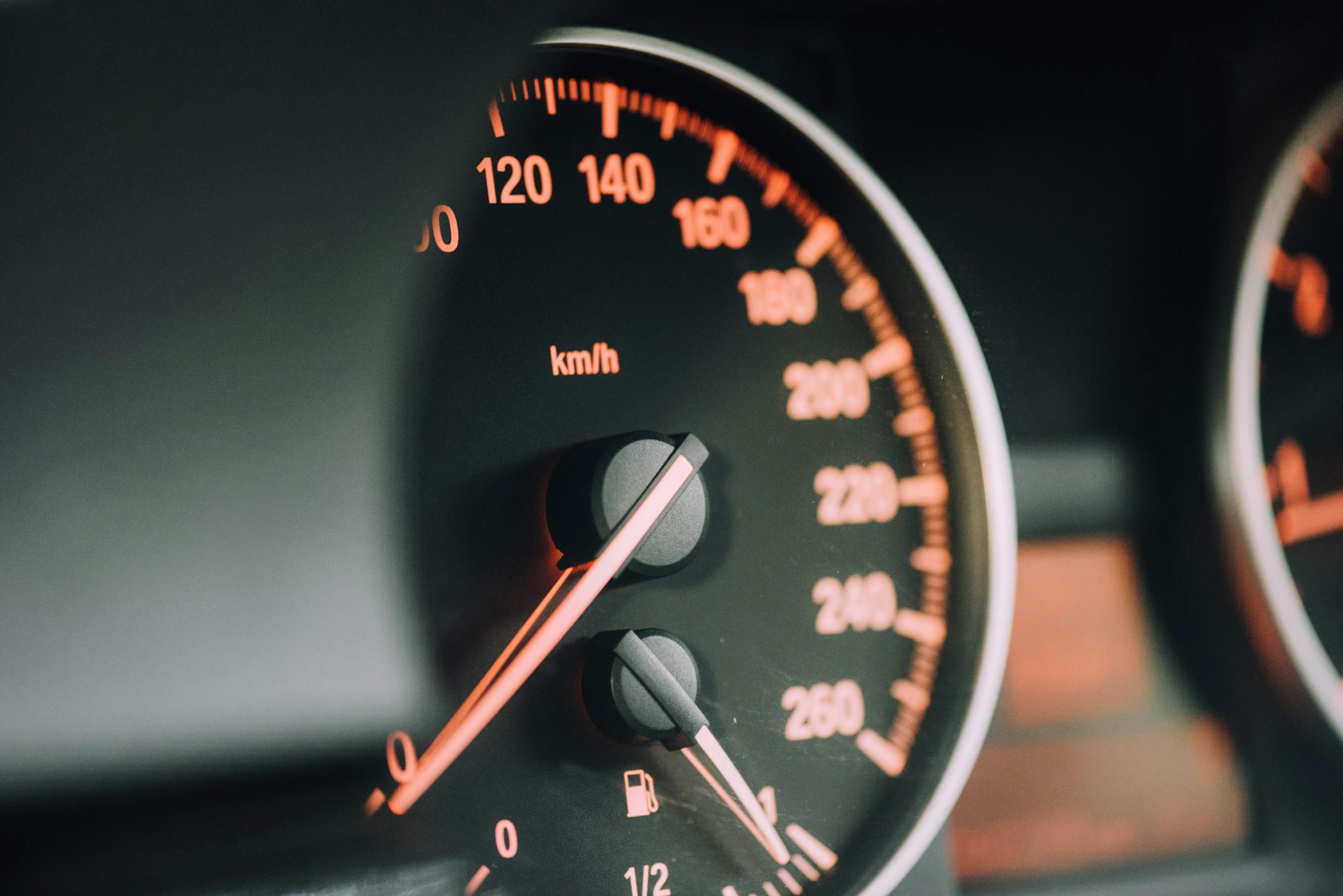07/11/2024
What is NCAP, and how does it relate to car safety?

From small hatchbacks to powerful SUVs – every car has to ensure a certain level of safety so that the driver and passengers are protected during the collision. While crash tests aren’t mandatory for manufacturers, they give buyers an understanding of which cars are safe and which aren’t.
Organizations that assess car safety performance and give vehicle ratings are called NCAPs. Let's delve into what NCAP means and how it contributes to making cars safer.
What is NCAP?
NCAP (New Car Assessment Program) is an umbrella term, encompassing NCAPs in different regions. The term was created in 1978 by the United States National Highway Traffic Safety Administration to give consumers a measure of vehicle safety and, more importantly, to encourage manufacturers to take safety seriously.
NCAP conducts frontal, side, and rollover tests to evaluate a car's performance in various situations. It also educates the public about vehicle safety and promotes fleet managers' use of safer cars and technologies. Surprisingly, the test vehicles are bought anonymously from dealerships – they’re not supplied by manufacturers.
Multiple NCAPs exist worldwide, including in Asia, Australia, Europe, Latin America, and the US:
- The Australasian New Car Assessment Program (ANCAP)
- New Car Assessment Program for Southeast Asia (ASEAN NCAP)
- The China New Car Assessment Program (China NCAP)
- The European New Car Assessment Programme (EURO NCAP)
- Global New Car Assessment Programme (Global NCAP)
- Insurance Institute for Highway Safety (IIHS)
- Japan New Car Assessment Program (Japan NCAP)
- Korean New Car Assessment Program (Korean NCAP)
- Latin New Car Assessment Program (Latin NCAP)
- National Highway Traffic Safety Administration (NHTSA)
- Bharat New Car Assessment Program (Bharat NCAP)

Looks can be deceiving!
Don't risk your safety - check it with carVertical first
How to understand the 5-star safety rating
NCAP organizations publish car safety reports based on their performance in crash tests and typically give them a safety rating from 0 or 1 to 5 stars. In any case, the higher the safety rating of your vehicle is, the safer you are.
During an accident, people in a 5-star car will have higher chances of surviving than in a vehicle with a 0-star safety rating. As thousands of severe road accidents happen every year, a car with more stars can save your life.
Let’s break down the 5-star rating system:
- 5 stars. A vehicle is equipped with comprehensive and robust crash avoidance technology, ensuring a high level of safety in various scenarios. This makes it an excellent choice for safety-conscious drivers.
- 4 stars. Good overall performance in crash protection. A vehicle may include additional crash avoidance technology, making it a reliable option for those seeking a balance of safety and technology.
- 3 stars. A vehicle offers at least average occupant protection. However, it may not always come equipped with the latest crash avoidance features. It provides a standard level of safety suitable for general use.
- 2 stars. A vehicle lacks advanced crash avoidance technology. It provides basic safety but falls short in offering comprehensive protective features.
- 1 star. Marginal crash protection. A vehicle offers little in the way of crash avoidance technology, making it a less desirable option for those prioritizing safety.
- 0 star. A vehicle lacks critical modern safety technology but can still be sold.
A poor safety rating also damages the manufacturer’s reputation and could lead to low sales. Therefore, after an unsuccessful test, such cars usually receive a safety upgrade to attract customers. However, NCAP organizations worldwide don't have the capacity to test every model on the market and all of its variants, therefore they only pick some popular vehicles.
Understanding the NCAP's role in car safety

All the tests performed by NCAP organizations in different countries are available to the general public. You can hop on the NCAP website in your region and see how safe the car you’re interested in is. NCAP organizations provide detailed reports about a vehicle’s safety, including videos from crash tests, safety equipment lists, and adult, child, and road user safety scores.
It’s up to the buyer to decide whether to get a vehicle with a low safety rating. However, most people would probably skip such models.
Manufacturers of cars with 5-star ratings use this evaluation as a marketing tool. After all, everyone wants a safe vehicle. And yet, when it comes to picking a car, people may have very different needs and priorities. Therefore, if a vehicle has a poor safety rating, this doesn’t mean that its sales will go down.
Car manufacturers take these tests seriously and usually try to improve their cars to get a better rating next time.
NCAP vs. Euro NCAP: a comparison
Different regions have different car safety requirements and regulations. Therefore, if you take NCAPs in Latin America, Asia, or Australia, their testing protocols may differ.
Global NCAP serves as a platform for collaboration among new car assessment programs and advocates for the worldwide adoption of the United Nations' most crucial motor vehicle safety standards. However, global NCAP doesn’t perform any crash tests itself.
Launched in 1997, Euro NCAP is an organization, assessing cars and giving them safety ratings in Europe. Just to give an example of the impact Euro NCAP has on the car market, in 2017, it gave its first-ever zero-star rating for the Fiat Punto. A year later this Fiat was discontinued.
Euro NCAP, like other NCAP organizations, recommends choosing only cars with 5-star ratings. However, thousands of vehicles with low safety ratings are still sold across Europe.
Euro NCAP safety standards aren’t carved in stone – they’re constantly being updated. So, the same model may receive a lower rating several years later just because Euro NCAP has raised the safety bar.
Exploring vehicle safety standards and crash tests

Whether performed in Europe, Latin America, or other regions, NCAP tests cover 4 important areas – these are key safety standards that every car model must comply with to receive a higher score.
Adult occupant protection
The adult occupant protection score gives a comprehensive overview of how well a vehicle can protect adult drivers and passengers in various crash scenarios.
Tests performed:
- Frontal impact (mobile progressive deformable barrier and full-width rigid barrier).
- Lateral impact (side mobile barrier, side pole, and far-side impact).
- Rear impact (whiplash).
- Rescue and extrication.
Child occupant protection
NCAP tests typically use dummies representing 6 and 10-year-old children to evaluate how well they’re protected during a crash. A selection of popular child restraint systems (CRS) is installed to ensure they can be easily and correctly fitted.
Tests performed:
- Child restraint system.
- Safety features (including seat belt length, belt buckle location, ISOFIX anchorage accessibility, and CRS stability).
- CRS installation check.
Pedestrian and vulnerable road user protection
These tests evaluate how a car’s safety features protect pedestrians, cyclists, and other road users. During the test, a dummy appears in the middle of the road to assess the effectiveness of the automatic braking system. The tests are conducted under both daytime and nighttime driving conditions. Additionally, road user detection is tested while the car drives in reverse.
Tests performed:
- Head impact.
- Leg impact.
- Pelvis impact.
- Autonomous emergency braking (pedestrian).
- Autonomous emergency braking (cyclist).
- Cyclist dooring prevention.
- Autonomous emergency braking / Lane support motorcyclist.
Safety assist
Every modern car has various safety technologies that mitigate the risk of accidents. NCAP tests imitate various accident scenarios and assess how effectively occupant status monitoring, lane support, speed assistance, electronic stability control, and other features do their job.
Tests performed:
- Autonomous emergency braking (car-to-car).
- Occupant status monitoring.
- Speed assistance.
- Lane support.
NCAP conducts a series of crash tests, imitating real-life conditions, to determine whether a car is safe. All vehicles are tested in the same environment, so the test provides an objective view of a car’s safety. Several types of dummies are used, imitating male, female, and child occupants.
The importance of safety ratings

Enhanced vehicle safety
Manufacturers try to innovate their safety technologies to get a better rating, as this directly affects their sales. The 5-star rating system also created car safety standards in the industry and all manufacturers incorporate them into their models.
Reduced fatality rates
NCAP tests have had a huge impact on the automotive industry, saving the lives of thousands of people every year. This includes drivers, passengers, and other road users like cyclists and pedestrians.
Lower insurance price
Cars with rich safety features and 5-star rating may qualify for lower insurance prices. Since advanced safety technologies correlate with lower chances of getting into accidents, some insurance companies may apply lower rates.
Benefits of NCAP safety ratings for consumers
While only a small percentage of drivers know their car’s safety rating, getting familiar with NCAP tests can make the vehicle buying process smoother. How can NCAP safety ratings benefit you?
Informed decision-making
NCAP safety ratings provide consumers with valuable information about vehicle safety features and performance, enabling them to make informed decisions when purchasing a car. Buyers can learn if the vehicle they’re interested in is safe to drive and has the latest safety technology.
When buying a used car, relying on crash test information and safety ratings isn’t enough. Even the safest vehicles with 5-star ratings can be involved in accidents, which can damage their frame, suspension, engine, airbags, and more.
That’s why we recommend complementing the NCAP test scores with carVertical’s history report to learn if the car has been damaged in the past. The history report also contains other valuable information, such as mileage and theft records, technical specifications, ownership changes, photos, and more. The benefits of NCAP safety ratings for consumers are obvious, but combining them with a history report mitigates the risk of buying a car in poor condition.

Increased awareness of vehicle safety features
The NCAP rating system educates drivers on safe vehicles and may influence their buying decisions. Since NCAP tests provide various crash test videos and safety information, this allows buyers to avoid unsafe vehicles.
Buyers can also compare the safety features of different cars to understand the latest technologies that may benefit them.

Check your VIN
Avoid costly problems by checking a vehicle's history. Get a report instantly!
